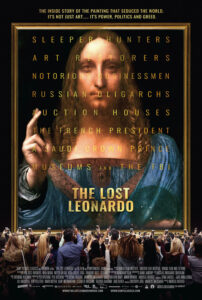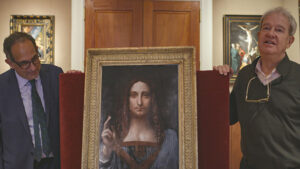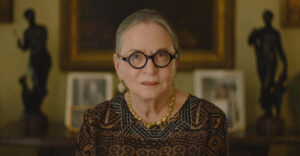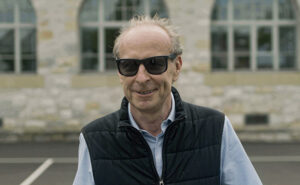Film Review: Engaging Documentary “The Lost Leonardo” Wonders at the Cost of Art
Written by: Christopher Llewellyn Reed | August 19th, 2021

The Lost Leonardo (Andreas Koefoed, 2021) 3 out of 4 stars.
Who determines the cost of art? In Nathaniel Kahn’s 2018 documentary The Price of Everything, the culprits are many, from art dealers, critics, collectors and more. In Andreas Koefoed’s latest film, The Lost Leonardo, similar suspects emerge, though one in particular stands out: a Swiss businessman named Yves Bouvier who will do anything to make a fast buck, even if it means cheating a Russian oligarch out of millions. “Excuse me,” you say, “a Russian oligarch? Aren’t those guys dangerous?” Indeed, so Bouvier should count himself lucky that he still has his head. He did lose quite a lot, though, as well he should have. He is merely the most unscrupulous of the players in this fascinating look at how quickly a painting can rise in worth. There’s a full cast of characters who transform this documentary into a veritable freak show of the rich and those who wish to be.
We start with one Alexander Parish, a New York-based self-professed “sleeper hunter” who, along with Old Masters dealer Robert Simon, discovers a seemingly undervalued (aka “sleeper”) 16th-century canvas in a New Orleans auction, which they buy in 2005 for $1175. Cut to an onscreen graph that shows that in 2013, the same painting sold for $83 million, then $127.5 million, and then, in 2017, for $450 million. That’s quite a series of rapid jumps, which raises the dramatic question of “what happened?” Good thing Koefoed (The Arms Drop) tries his best to answer that.

Parish and Simon suspect that their purchase comes from a workshop closely affiliated with Leonardo da Vinci, painted by someone in his close orbit, which would make the work worth more than what they paid. They hand it over to a skilled restorer, Dianne Modestini, who soon becomes convinced that the artist in question was no pupil of da Vinci, but the master, himself. Could this be the lost “Salvator Mundi,” a work referenced in the historical annals but never seen in modern times? Joining forces with another dealer, Warren Adelson, the team starts shopping it around.
First, though, they need experts (historians and specialists in da Vinci) to weigh in. And so the would-be painted Jesus (soon to be dubbed the “Male Mona Lisa”) is shipped off to London’s National Gallery, where then-director Luke Syson becomes its biggest cheerleader. Not everyone is so easily convinced, however, for the work’s provenance is murky and a lot of it is now as much from Modestini’s brush as da Vinci’s (or from whomever the original artist was). It’s a mystery wrapped in a conundrum inside of an enigma, unsolved to everyone’s satisfaction even to this day. Still, the how of that $450 million makes for some entertaining viewing.

Along the way of that “how” is Mr. Bouvier, owner of a Geneva freeport, where goods (mostly art) can be stored in a customs-free facility next to an airport that exists outside of local (or any, really) jurisdictions. Business can be conducted in such places without being subject to taxes. Nice! Why is this legal? That’s a topic for another movie. In any case, Bouvier is tasked by Dmitry Rybolovlev, the aforementioned oligarch, with purchasing the Salvator Mundi, since famous paintings (real or not, apparently) are a good investment for one’s wealth (especially if they are kept in freeports), and Bouvier follows these instructions, making a hefty profit for himself at the same time.
Eventually, Rybolovlev discovers the swindle and moves to not only discredit Bouvier, but to resell the painting via a new auction, managed by Christie’s. Someone (still unconfirmed, but believed to be Mohammed bin Salman, the Crown Prince, and effective ruler, of Saudi Arabia) then buys it for $450 million, the largest sum ever spent on a work of art. And still there are many who do not believe it is an actual da Vinci. While the movie does not quite resolve in full the question of why someone would spend that much money on a potential fake, in many ways there is no proper answer. That’s the joy and frustration of The Lost Leonardo. Still, it’s a mostly entertaining ride, even if the storytelling techniques are fairly conventional. Who determines the cost of art? Those willing to pay for it.


